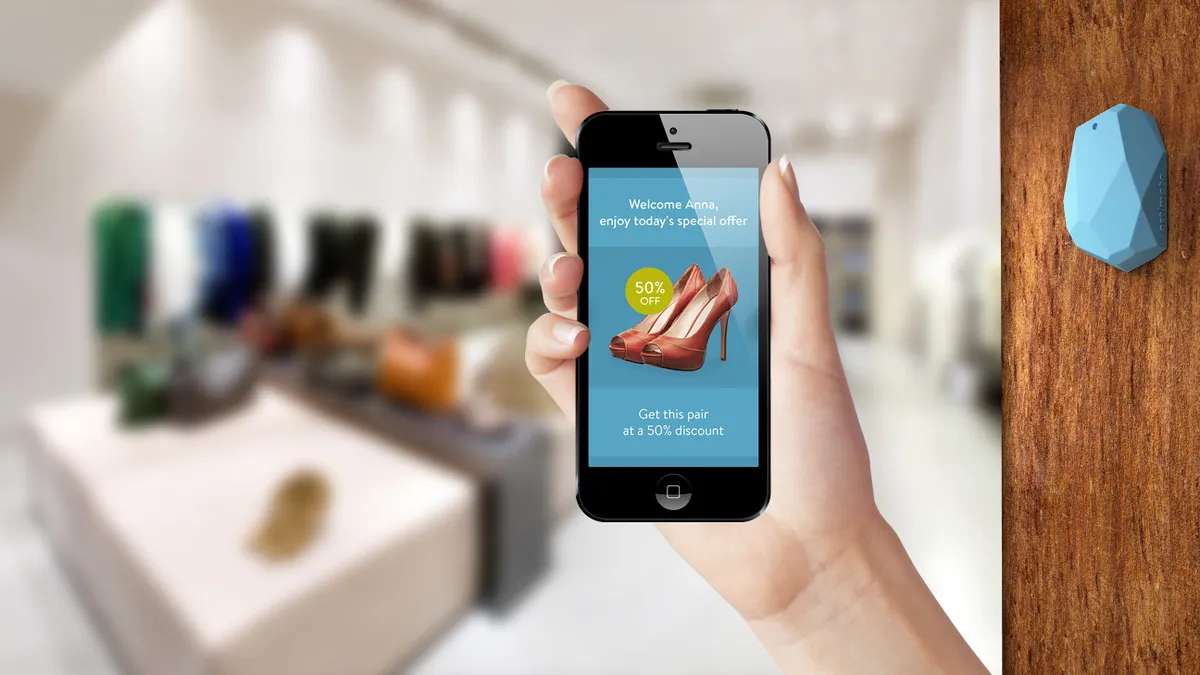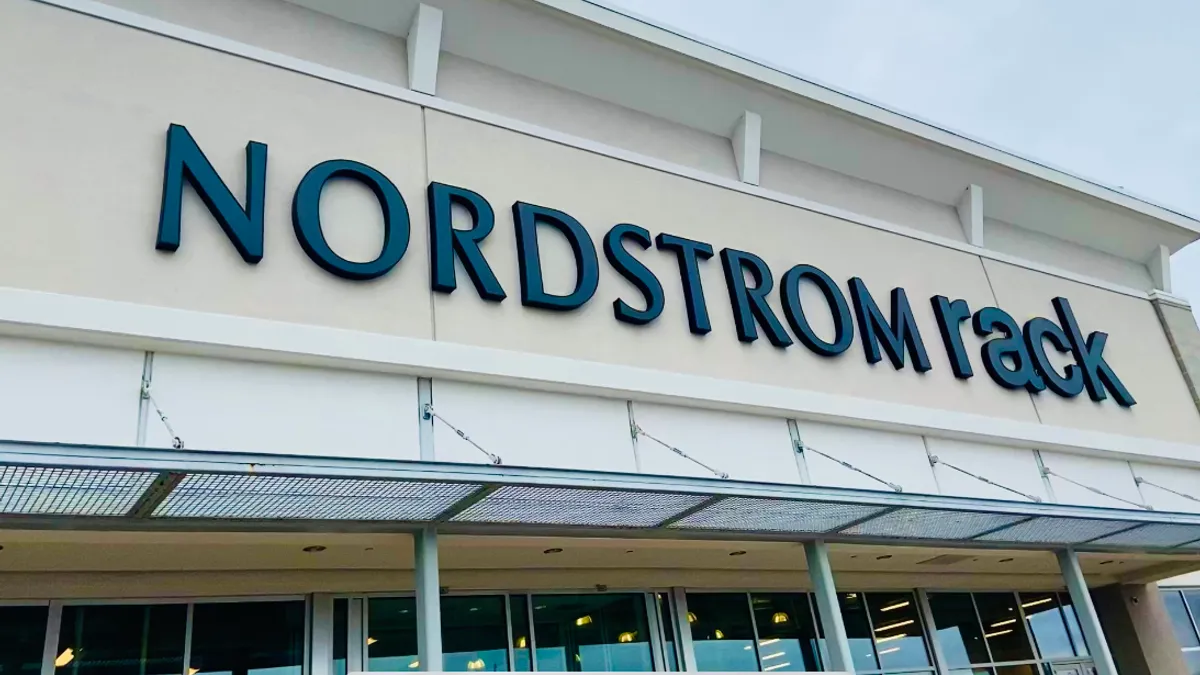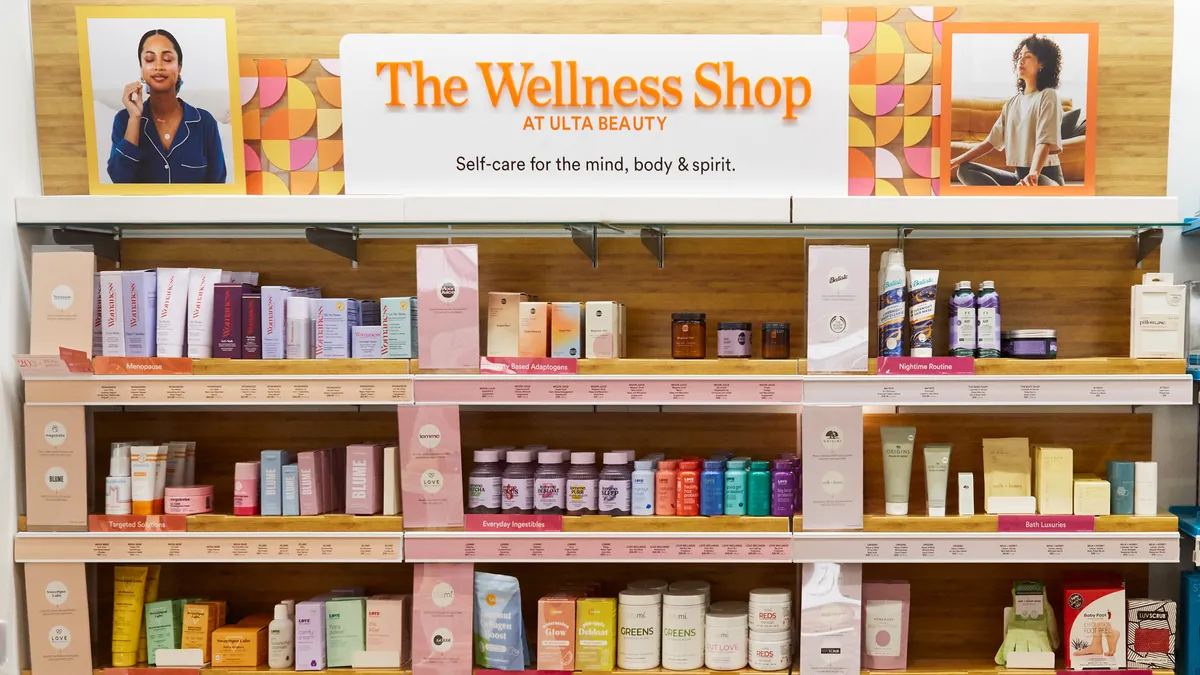Beacons, the low-powered radio transmitters employing Bluetooth connectivity to find and communicate with nearby smartphones, was one of this year’s hot retail topics. Beacons in store can trigger push notifications to beam special offers or useful content to shoppers’ phones.
Sounds like a brick-and-mortar retailer’s dream, right?
After all, 80% of customers say they’re more likely to engage with retailers’ apps while shopping if they get notifications on deals and discounts, according to a study from Swirl. And some 62% of respondents said they’d engage if content is customized to their preferences and “likes.”
But there’s a decidedly mixed pattern of views on the future of beacons, with some saying their ubiquity is just a matter of time and others saying their utility is more limited than initially thought, and not so much in marketing.
In reality, 2016 is not likely to see a huge number of retailers jump on the beacon bandwagon. More likely, retailers will take a step back and assess the potential of mobile more broadly as a part of their in-store strategy.
“Beacons were the shiny object in 2015, and there was a lot of investment in them,” retail futurist Doug Stephens told Retail Dive. “I think that what relailers are discovering is that beacons may not simply be yet another channel through which promotion and messaging get shoved down to shoppers. I think we’re going to mature beyond that.”
Who’s using beacons
Macy’s, Sephora, Target, GameStop, and Lowe’s, and, frankly, most larger retail chains have at least tested beacons in their stores. That has allowed reporters, bloggers, and consultants to suss out how they work in the real world. From a nuts and bolts standpoint, in some cases some simple tweaks seem to be in order, like making sure batteries are charged, antennas are properly oriented without interference, and beacons are placed well.
Otherwise, the tech can be touchy. Sometimes, for example, beacons will greet customers repeatedly after already having entered a store if they happen to pass near the entrance. Then there are the aspects out of a retailer’s control; the Bluetooth connectivity must be on and a retailer’s app must be downloaded onto the phone for beacons to communicate.
Beyond such nitty-gritty details, though, many customers aren’t very appreciative of the tech’s “smart” features, reporting, for example, that getting a coupon for an item they’re looking at can be creepy. So one reason beacons have failed to emerge as a major retail force is that the technology hasn’t yet been refined to be really useful to the shopper.
“From a consumer standpoint, using beacons is sort of a hassle, when it involves downloading and installing an app that doesn’t relate to the users’ lifestyle,” Kim Stuart, COO of mobile wallet marketing services vendor Atlas Rewards Corp., told Contently. “Most companies fail to realize that spending the money to create (and then support) an app is a fruitless enterprise on their part [because] they don’t have a user base that’s large enough to make it worthwhile.”
It may be hard to believe that independent tech consultant Hari Gottipati is even still a fan of beacons, considering that his initial impression, two years ago, of the tech's usefulness has largely fizzled. But he now believes, reports Bloomberg, that the technology will be more useful to customers in their homes, helping them to manage their connected devices, rather then in stores helping them to shop.
'More than a hammer'
Yet, while beacons may be falling flat as a marketing tool, they could remain valuable to retailers as a source of data, some observers say. And if consumers begin to use them and find them helpful in other contexts, retailers could find them more receptive to them in store as well.
“Retailers might recognize that beacons are not so much a push platform, but a pull platform,” Stephens says. “They should be giving consumers the ability to pull info from a beacon at their behest. They can use that interaction as a means of measuring the desire that consumers are bringing, how they’re using the store experience."
"Shoppers are looking for information about price, reviews, performance," he continued. "Retailers haven’t been good at consistent sales floor support, but beacons could be a great way of providing information, and of measuring which products they’re interested in. 2015 is the year that we took this hammer that is beacons, and everything looked like a nail. In 2016 think retailers will realize that it’s a much more useful tool than just being a hammer.”
Different approaches
A more refined approach may already be under way at Target, which has been working with indoor mapping technology company Point Inside since last year to map each store, reflecting the unique layouts and shopping patterns of each neighborhood spot, and, as Point Inside CEO Josh Marti puts it, treating each shelf like a web page on e-commerce.
“Beacons are extremely helpful for so many things,” Marti told Retail Dive. “They can helpful to a retailer in understanding how to reorder your shopping list or understanding how to dispatch associates or understanding wait times—and there are so many more things that they can do.”
But, Marti says, beacons aren’t the key or even a necessary part of a retailer’s mobile strategy. For example, beacons could help shoppers know ahead of time if the item they seek is at their local Target. Even better, he says, physical retailers can take a page from Amazon and suggest other items that are also in store using machine learning technology.
“You can actually use shoppers’ mobile searches and what’s on their list to project their location in the store, you don’t necessarily need beacons,” he says. “The retailer has so many physical assets, the shopper already knows how to engage with that.”
Bottom line, says Marti, retailers must continue to develop both their mobile web and mobile app capabilities to communicate with their customers on and offline. And the communication should go both ways, to the benefit of both.
“For right now, given the landscape, it’s safe to say that in the next three years, retailers with a loyal following in the 10 million category should continue to focus on their mobile brand and strategy for their loyal shoppers,” he says. “We used to debate mobile web or app—but it has to be both.”
A good web experience can lead shoppers to your app, where there’s higher conversion and basket size “both in store and through that app.”
With or without beacons.





















